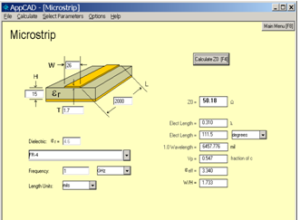PCB Board Reverse Engineering Impedance
Proper measurement techniques from PCB Board Reverse Engineering impedance are essential to obtaining accurate results. This section describes the requirements for making accurate measurements, which include instrument calibration, probing and data extraction using Time Domain Reflectometry.
General Equipment
The following instruments or their equivalent are recommended.
Tektronix 11800 series with SD24 TDR module Hewlett-Packard’s HP54120 series
Polar Instruments CITS500s (Impedance Only)

PCB Board Reverse Engineering Impedance
General Calibration
Calibration is essential for ensuring that the equipment is measuring the correct results with maximum accuracy. This is the first critical procedure necessary to insure proper instrument setup prior to measurement capture. Proper instrument calibration and verification on a regular basis can not be over emphasized.
1 The following section describes procedures for the Tektronix 11801B Digital Storage Oscilloscope with SD24* sampling head.
Calibration should be performed on a daily basis.
|
Gain |
Purpose: |
Adjust loop gain for damping pulse response. |
| Actions: |
|
|
|
Offset |
Purpose: |
Sets offset of TDR pulse |
| Actions: |
|
|
|
TDR Amplitude |
Purpose: |
Sets TDR Amplitude |
| Actions: |
|
General Calibration Verification
After calibration is completed, leave the 50Ω load termination on the instrument. Turn cursors with TDR vertical scale in rho and verify that the reading is 50 Ohms before PCB Board Reverse Engineering.
TDR sampling heads are susceptible to static discharge damage. This damage will not necessarily render the head inoperable but could induce measurement error. The following steps can be completed to check for static damage.
Connect the 50Ω load termination. Adjust the time scale to ~ 500ns/div The upper portion along the pulse should be flat with no sag.
Note: A 50Ω air dielectric reference load will provide the best accuracy for calibration. Air dielectric loads can be used to obtain a reference voltage used to calculate load impedances. Air dielectrics should be used to obtain the highest accuracy (>0.4Ω).
Tags: pcb assemble reverse engineering,pcb board reverse engineering,pcb card reverse engineering,pcb reverse engineering,pcba reverse engineering,Printed Circuit Board Reverse Engineering,printed wiring board reverse engineering,pwb reverse engineering,pwba reverse engineering

